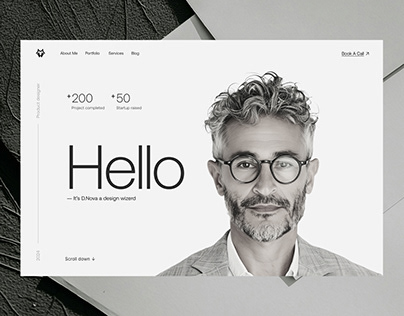Intuitive Website Design Services That Improve Usability and User Experience
Intuitive Website Design Services That Improve Usability and User Experience
Blog Article
Leading Tips for Creating an Impactful Web Site Layout That Converts
To accomplish this, one have to consider a selection of aspects, consisting of comprehending the target audience, prioritizing individual experience, and enhancing for mobile platforms. The tactical use of compelling call-to-actions and a well-defined aesthetic power structure plays a crucial duty in leading customers with their journey.

Understand Your Target Market
Understanding your target market is basic to reliable internet site layout, as it prepares for producing an engaging user experience. Recognizing that your individuals are, including their demographics, choices, and habits, enables developers to customize the website's material, design, and functionality to fulfill particular demands.
Conducting complete market research study is critical in this procedure. Surveys, meetings, and analytics can provide useful insights into user assumptions and pain points. By compiling this data, designers can produce individual identities that represent different segments of the audience, guaranteeing that design choices are notified and relevant.
Moreover, understanding the target audience assists in choosing proper style elements such as color design, typography, and images that reverberate with users. A web site that talks straight to its audience fosters a feeling of link and trust, urging longer gos to and higher conversion prices.
Inevitably, a user-centered approach to internet site style not only enhances customer contentment however likewise supports business purposes by driving interaction and loyalty. By prioritizing the needs and choices of the target market, an internet site can properly serve its objective and achieve wanted outcomes.
Prioritize User Experience
To boost the overall effectiveness of an internet site, prioritizing user experience (UX) is important (Website Design). A well-designed UX makes certain that site visitors can navigate the website easily, locate information rapidly, and engage with content meaningfully. This results in raised individual contentment and higher conversion prices
Begin by carrying out intuitive navigation. Menus should be realistically structured, allowing individuals to situate key locations of the site with minimal initiative. Consistency in design elements, such as color design and typefaces, fosters experience, which is important for keeping customer engagement.
Furthermore, take into consideration the packing speed of your web site. A delay of just a couple of seconds can lead to significant drop-offs, as customers are less most likely to wait on a slow-loading page. Enhancing pictures and enhancing code can improve performance and keep visitors.
By focusing on customer experience, you not only produce an extra delightful setting for visitors but also reinforce your brand name's reliability. Eventually, a focus on UX is an investment in the long-lasting success of your web site.
Optimize for Mobile Gadgets
Maximizing for smart phones is essential in today's digital landscape, where a boosting number of users accessibility sites via smart devices and tablet computers. A mobile-friendly style not only improves customer experience yet also plays a substantial duty in improving online search engine rankings. To achieve this, it is important to adopt a responsive style that automatically adapts to numerous display sizes and positionings.

Loading rate is another important factor; mobile individuals are commonly less client and anticipate quick accessibility to info. By prioritizing mobile optimization, you make certain that your site stays affordable and efficiently engages a broader target market.
Use Engaging Call-to-Actions
A website's performance usually rests on its my company ability to direct visitors toward desired activities, making compelling call-to-actions (CTAs) vital components of design. CTAs function as the critical factors that guide users to engage with the website, whether that means buying, signing up for an e-newsletter, or downloading and install a source.
To create effective CTAs, quality is extremely important. Use concise language that clearly connects the activity you desire the user to take. Expressions such as "Begin," "Join Free," or "Store Now" not just share necessity yet additionally eliminate ambiguity. The placement of CTAs is similarly essential; they ought to be purposefully positioned throughout the webpage to guarantee they are easily noticeable, particularly in high-traffic areas.
Furthermore, additional resources the layout of CTAs ought to stand out without being meddlesome. Employ contrasting colors and clear font styles to ensure they record attention. Additionally, take into consideration utilizing directional signs, such as arrows or images, to lead individuals toward these buttons. By concentrating on these components, businesses can dramatically enhance user interaction, driving conversions and eventually accomplishing their web site's goals.
Emphasis on Visual Power Structure
Efficient site design relies heavily on a well-structured visual pecking order that overviews customers via content effortlessly. By arranging elements in a manner that prioritizes information, developers can boost customer experience and help with decision-making. This entails making use of size, shade, contrast, and spacing tactically to draw interest to one of the most vital parts of a webpage.
Making use of bigger font styles for headings and subheadings establishes a clear distinction between different areas, allowing users to scan content effortlessly. Additionally, using contrasting colors for switches and calls-to-action can record user interest and motivate communication. Whitespace is another essential part; it avoids mess and enables individuals to concentrate on essential messages without interruptions.
Pictures and graphics should complement the message while additionally sticking to the recognized hierarchy, reinforcing the overall message (Website Design). Consistency in style elements, such as color systems and typography, more enhances the visual power structure, making navigation intuitive

Final Thought
To conclude, effective internet site style demands a thorough understanding of the target audience, prioritization of user experience, and mobile optimization. The strategic use of compelling call-to-actions and a distinct visual hierarchy additionally boosts individual interaction. By executing these principles, sites can accomplish higher conversion prices, ensuring that design components not just bring in visitors however additionally promote smooth navigating and communication. Inevitably, a well-executed website style works as a vital component in driving user activities and attaining service goals.
Report this page